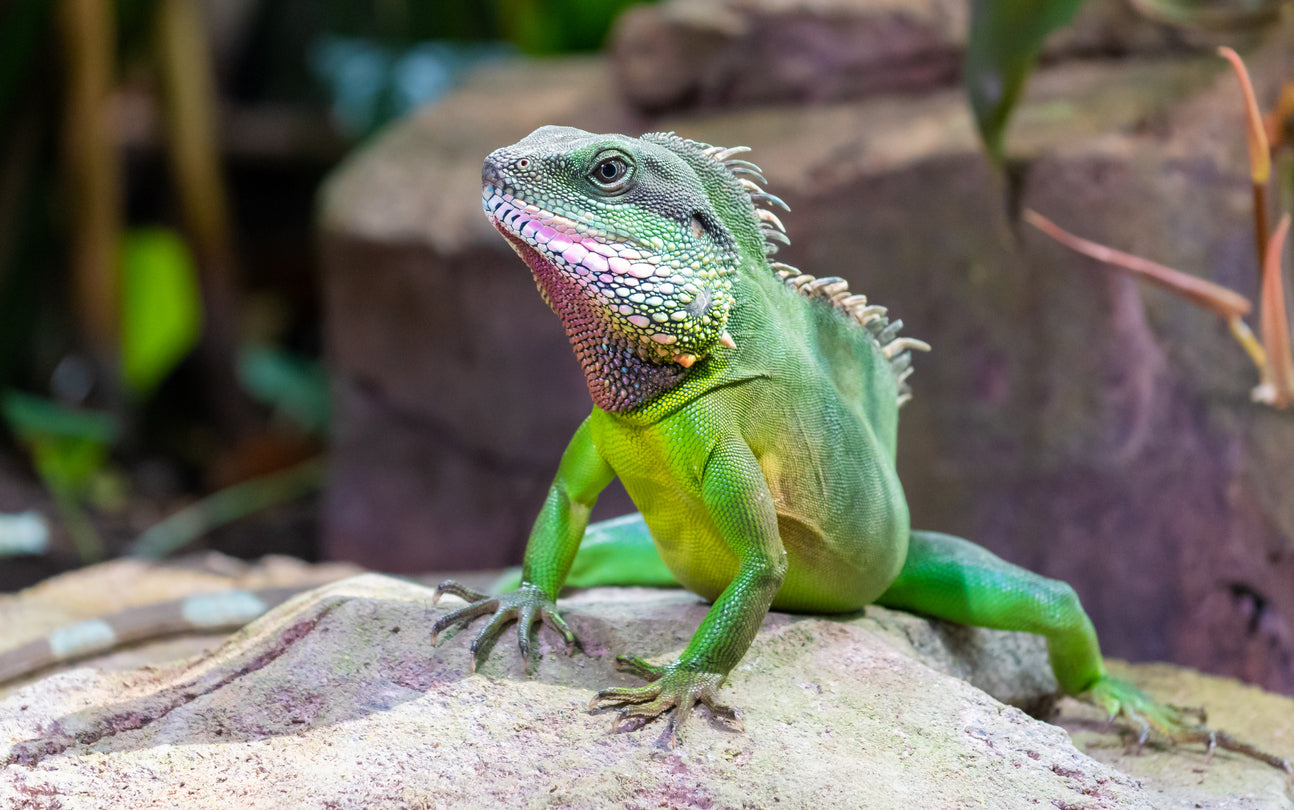
Picky Chinese Water Dragon? Here’s What Might Be Going On
Chinese water dragons are omnivores, which means that they evolved to get their nutrition from a variety of different foods, both plant- and animal-based. This also means that if your Chinese water dragon only seems willing to eat the same handful of foods all the time, this can harm their health by creating nutritional deficiencies.
To encourage your pet to broaden their dietary horizon, first you need to figure out what may be the cause.
You’re feeding your Chinese water dragon too many bugs
Chinese water dragons’ dietary needs change based on their stage of life:
- Hatchlings (<3 months old) — Insects daily
- Juveniles (<16” long) — Insects and salad every other day
- Subadults and adults (>16” long) — Insects every 3-5 days, salad daily
If your current feeding schedule differs from what is outlined above, then that might be the reason why your pet is acting so picky. A Chinese water dragon that gets too many bugs is likely to reject vegetables, because bugs taste better than vegetables. Bugs are also higher-calorie than vegetables, which means that they’re less likely to feel hungry in general.
The best way to correct this problem is by fixing your feeding schedule and making sure not to offer too many insects per meal.
You’re offering too many treats
Do you like to give treats to your Chinese water dragon? Of course you do! It’s common for keepers to try to express their love for their pets by giving them treats. A small treat once a week or so is unlikely to cause problems, but if you offer treats that are too big or too frequent, you might be ruining your dragon’s appetite.
Aside from encouraging your Chinese water dragon to eat more healthy foods, reducing the number of treats in their diet is likely to help prevent obesity, keep their organs working well, and guard against dental decay. If you miss the thrill of interacting with your pet, try hand-feeding them their normal foods with a pair of soft-tipped feeding tongs!
You’re not providing enough variety
As mentioned at the beginning of this article, Chinese water dragons are biologically built to eat a variety of different foods. If you’ve been feeding your pet the same rotation of greens and feeder insects for a while, it’s possible that they’ve simply become tired of getting the same-old-same-old. In fact, Chinese water dragons are well-known for craving variety in their diet! Fortunately, if your pet has lost their appetite because they’re stuck in the same routine, offering new foods for them to try should perk them up.
If your Chinese water dragon is turning up their nose at new foods instead, the only way to get them to consider alternatives is to stop offering familiar foods for them to lean on. Of course, each individual has different preferences, so if they consistently reject a particular food, it may simply be that they’d rather try something else.
Your Chinese water dragon isn’t feeling well
Appetite loss is one of the most common early symptoms of a lizard that isn’t feeling well. Reptiles are very good at hiding when they’re sick, because in the wild, that helps them avoid predators. This means that it’s your job as the owner to keep a close watch for symptoms of potential trouble.
If your Chinese water dragon has gotten pickier about the things they’ll eat, and none of the above explains the change, check your dragon’s setup. Are the basking and air temperatures within range? Is your UVB more than 12 months old and due for replacement? Check our Chinese water dragon care sheet.
However, if the care sheet doesn’t help and everything more or less still looks good, take your pet to an experienced reptile veterinarian to get checked out.
Conclusion
Under normal circumstances, Chinese water dragons shouldn’t be picky — after all, in the wild, they have to eat whatever they can get in order to survive. A picky lizard usually means that something is wrong. Check your feeding schedule, feeding rotation, and husbandry to see what might need to be fixed!

Leave a comment